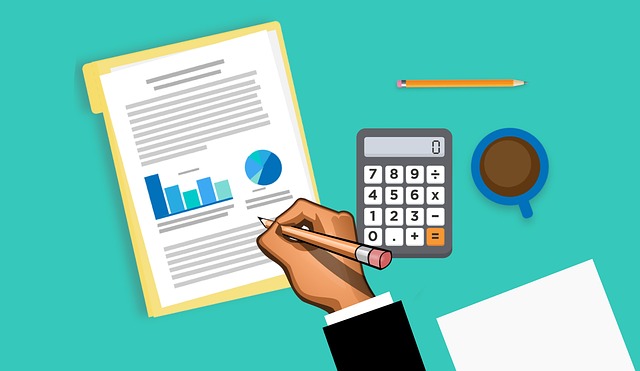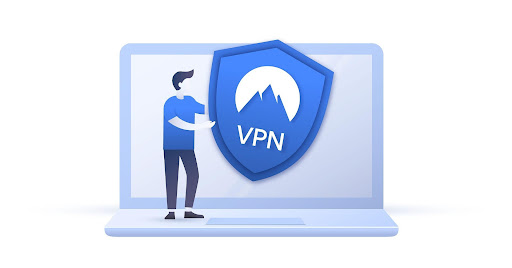Companies often concentrate on a remote learning platform’s (LMS) fundamental features, including its ability to import current training courses, build new training courses, and oversee the whole training process.
The use of learning management systems (LMS) in education and business training has become essential. They provide educators and trainers with a platform to collect and evaluate learning data, providing them with useful information about how students or workers are responding to training materials and how well they are remembering it.
The primary function that makes this possible is LMS reporting. In this post, we’ll talk about the value of LMS reporting, its main features, and how to utilize them to efficiently monitor and examine learning data. We’ll look at how LMS reporting may assist instructors and trainers in making data-driven choices that enhance the efficiency of their training initiatives.
What is LMS Reporting?
A component of learning management systems (LMS) reporting enables educators and trainers to monitor and evaluate information about participant engagement and development in online training courses. The number of students or workers who have accessed the training material, the time spent on each session, and the results of quizzes or assessments are just a few of the statistics that users may gather and evaluate using LMS reporting.
This data may be used to monitor levels of engagement, spot problems that students or staff are having, and assess the overall success of the training course. Additionally, LMS reporting systems often provide options for filtering data based on staff or student attributes, making charts and graphs, and displaying the information in various ways.
How to Use LMS Reporting to Improve Learning
Learning management systems (LMS) have become an important tool for teachers and trainers to use when giving online training programs in today’s fast-paced, technology-driven world. Users may monitor and evaluate data pertaining to student or employee engagement and progress using the essential feature of LMS reporting.
Educators and trainers may better understand how learners or workers are responding to training material and how well they are remembering it by knowing and using LMS data.
So, their training programs will work better, which will lead to better learning outcomes for both students and staff in the long run. You may use LMS reporting to enhance learning by doing the following:
1. Recognize the data
Examine the information that the LMS software is gathering, such as the number of students or workers who have accessed the training materials, the time spent on each course, and the results of any quizzes or tests. This information can be used to track levels of engagement and find areas where staff or students are having trouble.
2. Monitor progress over time
You can monitor progress over time by using the LMS reporting tool to see how learners or staff members are advancing through the training materials and how their performance on quizzes and assessments is evolving. This may help identify problem areas where staff or students need more assistance or where the training material may need to be changed.
3. Segment the data
You can segment the data by student or staff variables, such as geography, job function, or experience level, using the LMS reporting functionality. When examining the data in its entirety, it may not always be possible to spot patterns or trends.
4. Analyze and display the data
Make charts and graphs using the LMS reporting function to immediately spot patterns and trends. A line graph may be used to demonstrate how test results have changed over time, while a bar chart can be used to represent the proportion of students or workers that passed a quiz or assessment.
5. Take action
Apply the learnings from the LMS reports to your course of action. You may need to change the training material or provide more help if, for instance, you see that a specific set of students or workers is continuously having trouble with a certain subject.
Importance of LMS Reporting for Online Learning
Because it enables educators and trainers to monitor and evaluate data on participant engagement and success in online training programs, LMS reporting is a crucial tool for online learning. Users can use LMS reporting to find out how many students or workers have looked at the training materials, how long they spent on each session, and how they did on quizzes or tests, among other things.
This data may be used to monitor levels of engagement, spot problems that students or staff are having, and assess the overall success of the training course. Additionally, LMS reporting systems often provide options for filtering data based on staff or student attributes, making charts and graphs, and displaying the information in various ways.
And as was already noted, one of the key aspects of LMS reporting is the ability to monitor progress over time. This feature may assist educators and trainers in determining where students or workers need extra assistance or where the training curriculum may need to be altered.
It may be useful for educators and trainers to segment the data by student or employee variables, such as geography, job function, or experience level, in order to spot patterns or trends that may not be immediately obvious when examining the data as a whole.
Educators and trainers can see patterns and trends right away when they use LMS reporting to look at data and make charts and graphs to show what they found. Making data-driven choices to enhance the efficacy of their training programs may become simpler as a result of being able to more easily see areas where students or staff are having difficulty.
Additionally, they may better understand how students or staff are responding to training material and how well they are remembering it by using LMS reporting. As a result, their training programs will be more successful, which will eventually result in higher learning outcomes for both students and staff.
What are the Features of LMS Reporting?
To collect and evaluate learning data, learning management systems (LMS) are extensively used in both education and business training. An important part of LMS reporting is that it lets teachers and trainers find out how trainees or workers interact with training materials and how well they remember what they’ve learned.
To monitor and evaluate learning data, LMS reporting has three crucial components that are often used:
1. Data collecting and tracking
The capability to gather and keep track of information, including the number of students or staff who have accessed the training materials, the time spent on each course, and the results of quizzes or assessments. This information may be utilized to monitor levels of engagement and spot problem areas for staff or pupils.
2. Progress tracking
The capability of measuring progress over time, including how trainees or staff members are advancing through the training material and how their performance on quizzes or assessments is evolving. This may help identify problem areas where staff or students need more assistance or where the training material may need to be changed.
3. Data segmentation
The capability to divide data into groups according to the employee or student attributes, such as geography, role, or degree of expertise. When examining the data as a whole, it may not always be possible to spot patterns or trends.
4. Data visualization
The skill of making graphs and charts that make it easier to see patterns and trends. A line graph may be used to demonstrate how test results have changed over time, while a bar chart can be used to represent the proportion of students or workers that passed a quiz or assessment.
5. Customizable Reports
With customizable reports, customers may choose particular data and create a report that is suited to their own requirements.
6. Data export
The capacity to export data in several forms, such as Excel or CSV, to make it simple to share or analyze in other applications.
7. Notifications
When certain thresholds or triggers are hit, such as poor quiz scores or missed deadlines, LMS administrators or instructors may be notified.
8. Access Control
The capacity to restrict access by various people to various reports or to specific data within reports in order to protect the security and privacy of data.
LMS Reporting Tools to Use for Tracking and Analyzing Learning Data
Learning management systems (LMS) give teachers and trainers a place to collect and analyze learning data. This gives them useful information about how students or staff are responding to training material and how well they are remembering it.
A crucial component that makes this possible is LMS reporting. However, LMS reporting tools may be utilized to get a more thorough and accurate examination of the data. To monitor, analyze, and show the data in various ways, these tools might provide further features and functions.
Tracking and evaluating learning data may be done using a variety of LMS reporting tools. Among the most well-liked are:
1. Google Analytics
This program may be used to monitor and examine information about LMS users, the most popular sites, and how long users spend on each page. Data may also be divided up according to demographic factors like geography, age, and gender.
2. Tableau
This program may be used to build dashboards and interactive visuals that make it easy to see patterns and trends in data. Additionally, it enables you to filter and divide data according to several factors, like date range and student demographics.
3. Power BI
This program can be used to make interactive visualizations, reports, and dashboards based on the data from your LMS. You may segment and filter data using a variety of parameters, including student demographics and academic achievement.
4. Excel
This program may be used to analyze and display data in a number of different ways, such as by producing graphs and charts, computing statistics, and using pivot tables. It is often used for data analysis and is compatible with LMS data export.
5. Looker
This program lets you create interactive dashboards and visuals that make it easier to see patterns and trends in data. Additionally, it enables you to filter and divide data according to a variety of factors, including date range, student demographics, and academic achievement.
Conclusion
Understanding the efficacy of e-learning programs requires tracking and evaluating learning data via LMS reporting. By keeping an eye on key metrics like completion rates, engagement levels, and exam scores, teachers and trainers can learn important things about how students are engaging with the course content and find places where they need to improve.
LMS reporting can also help companies improve the overall quality of their training programs, figure out how much their e-learning projects are making them money, and decide where to put their resources based on the data. Organizations can use LMS reporting to make their e-learning programs more effective and help learners reach their full potential by putting in place the right strategies and tools.







